As the 20th century began, astronomers could only dream of an observatory orbiting high above Earth’s surface, searching space for cosmological secrets. Yet the Hubble Space Telescope has done just that.
It has helped to shine a light on our planetary neighbours and has discovered the existence of exoplanets – alien worlds around other stars.
It has watched the birth, life and death of stars, and it has helped to bring the darkest depths of the Universe into the light.
Read more about the Hubble Space Telescope:
- How Hubble is used to study exoplanets
- Milky Way centre 'dynamic', Hubble confirms
- Hubble captures earliest galaxies
Here, we'll delve into the ground-breaking science that has been enabled by Hubble in all of these areas.
The Solar System
The Solar System is our cosmic back garden. It should be one of the best-known parts of our corner of the Universe. Yet when Hubble launched in 1990 our planetary neighbourhood was still deeply shrouded in mystery.
Looking up from Earth, the ever-shifting atmosphere blurred our view of the planets, making it difficult to see their features.
Above the turbulent air, Hubble could watch these worlds in peace and has been doing so for the last three decades.
This long life has been one of Hubble’s greatest assets, making it possible to reveal the weather and climate patterns of changing seasons on our sister worlds as they make their journeys around the Sun.
The Hubble science team have taken advantage of this unique long view by undertaking a project called the Outer Planet Atmospheres Legacy (OPAL).
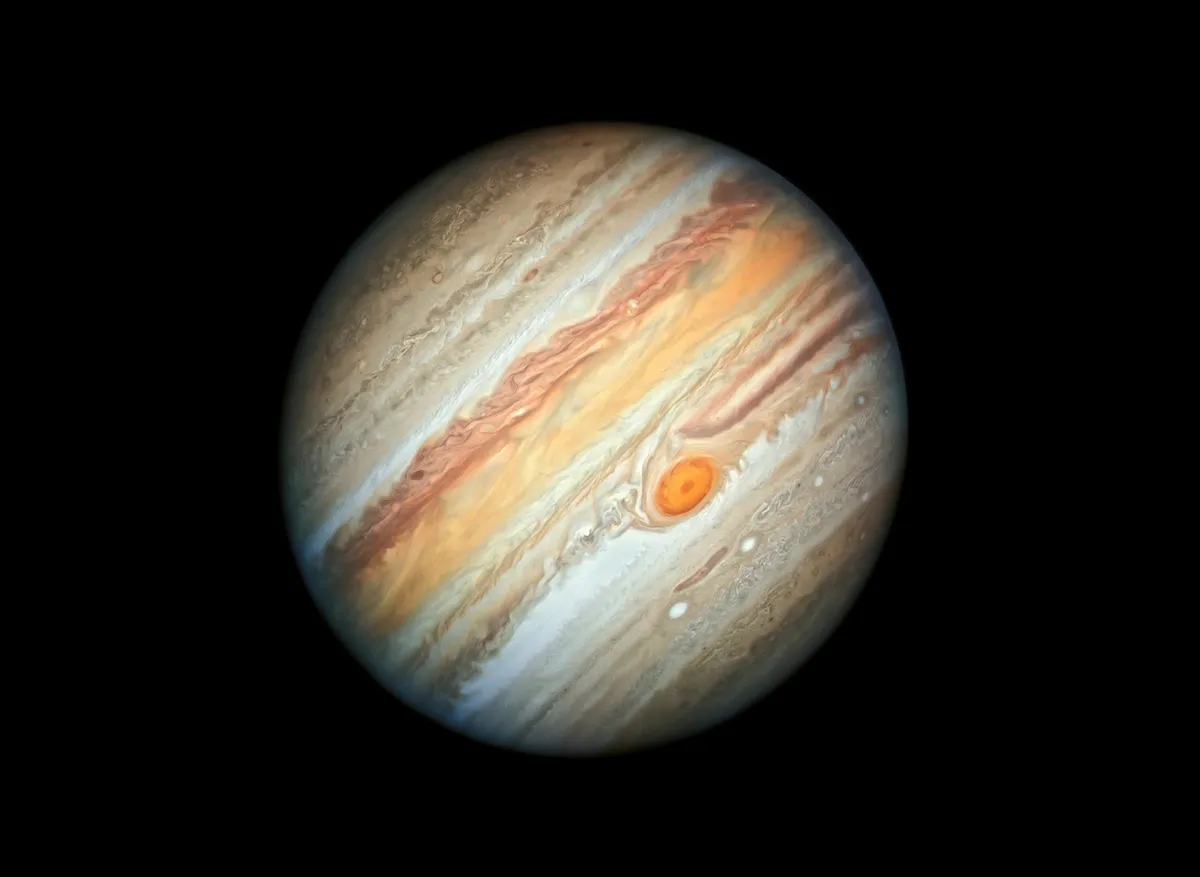
“OPAL employs Hubble to look every few months at Jupiter, Saturn, Uranus and Neptune to see if they’ve changed,” says Jennifer Wiseman, Hubble’s senior project scientist.
“Through OPAL we’ve learned how the Great Red Spot on Jupiter, a giant storm, is actually shrinking and changing colour over time. We see new storms cropping up, and we see them coming and going on some of the other outer planets too.
"Studying the changing nature of the planets in our Solar System is something that Hubble is enabling us to do through both its clarity of imagery and its longevity.”
Of course, Hubble hasn’t been the only one watching the planets over the years. Since its launch, dozens of missions have been sent across our Solar System and Hubble is often called upon to supply much needed context.
When Cassini arrived at Saturn in 2004, it could only see small parts of the planet at a time. Hubble, however, was able to take in the entire planet.
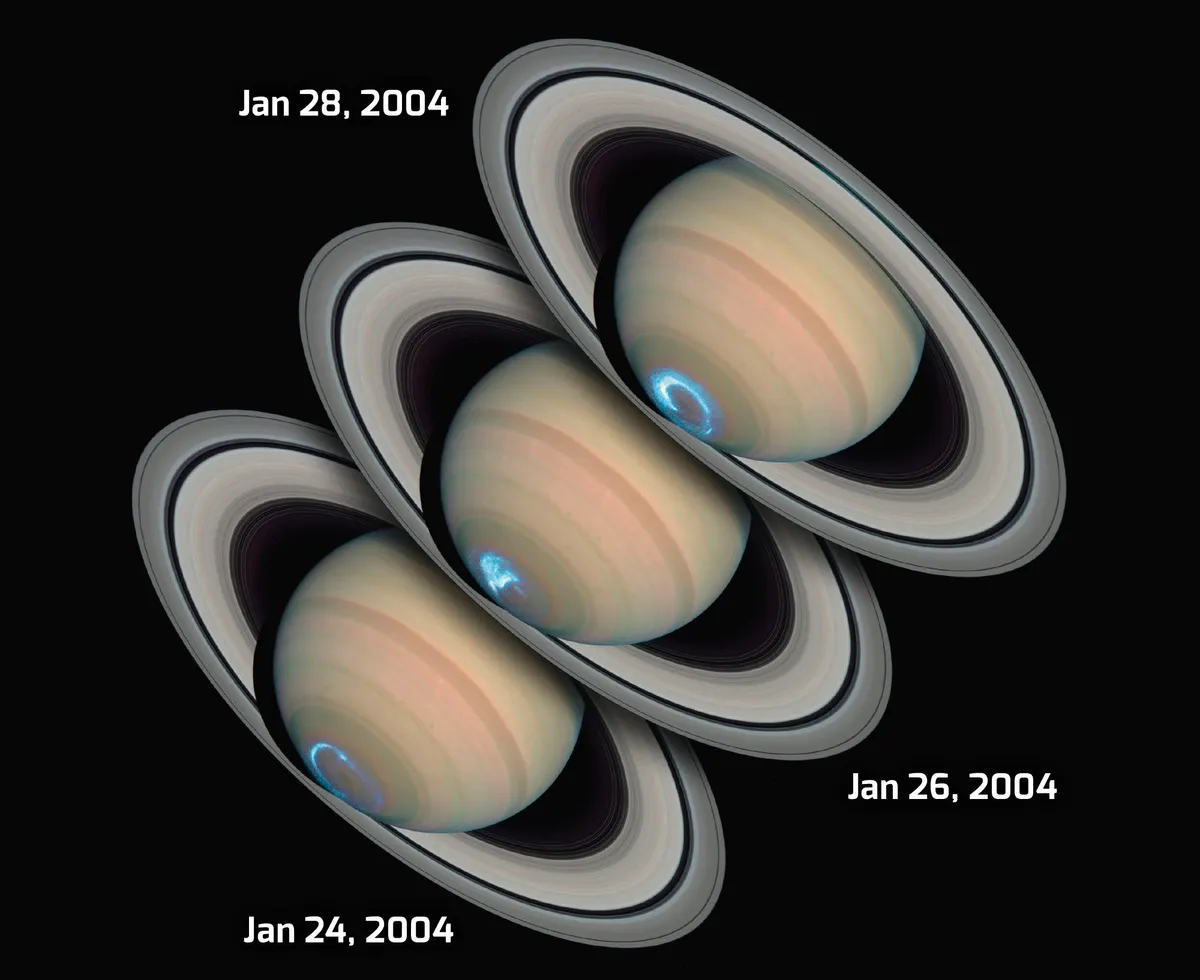
While this was at a much lower resolution, the telescope was able to track storms and auroral activity to help planetary scientists understand the data Cassini was sending back.
“This profoundly improves the science return from any of these particular missions, compared to them operating on their own,” says Wiseman.
Mars has been another target of Hubble’s attentions as it works in concert with the armada of spacecraft on and around the Red Planet.
The telescope has helped to track the huge dust storms which blow across the planet every Martian year.
Once again, this gives a global appraisal of the storm’s progress while the in-situ probes note localised changes such as temperature and pressure.
It’s not just during missions that Hubble offers support, however. For almost every planetary mission of the last 30 years, Hubble has been used to scout the way before the spacecraft even reached its target.
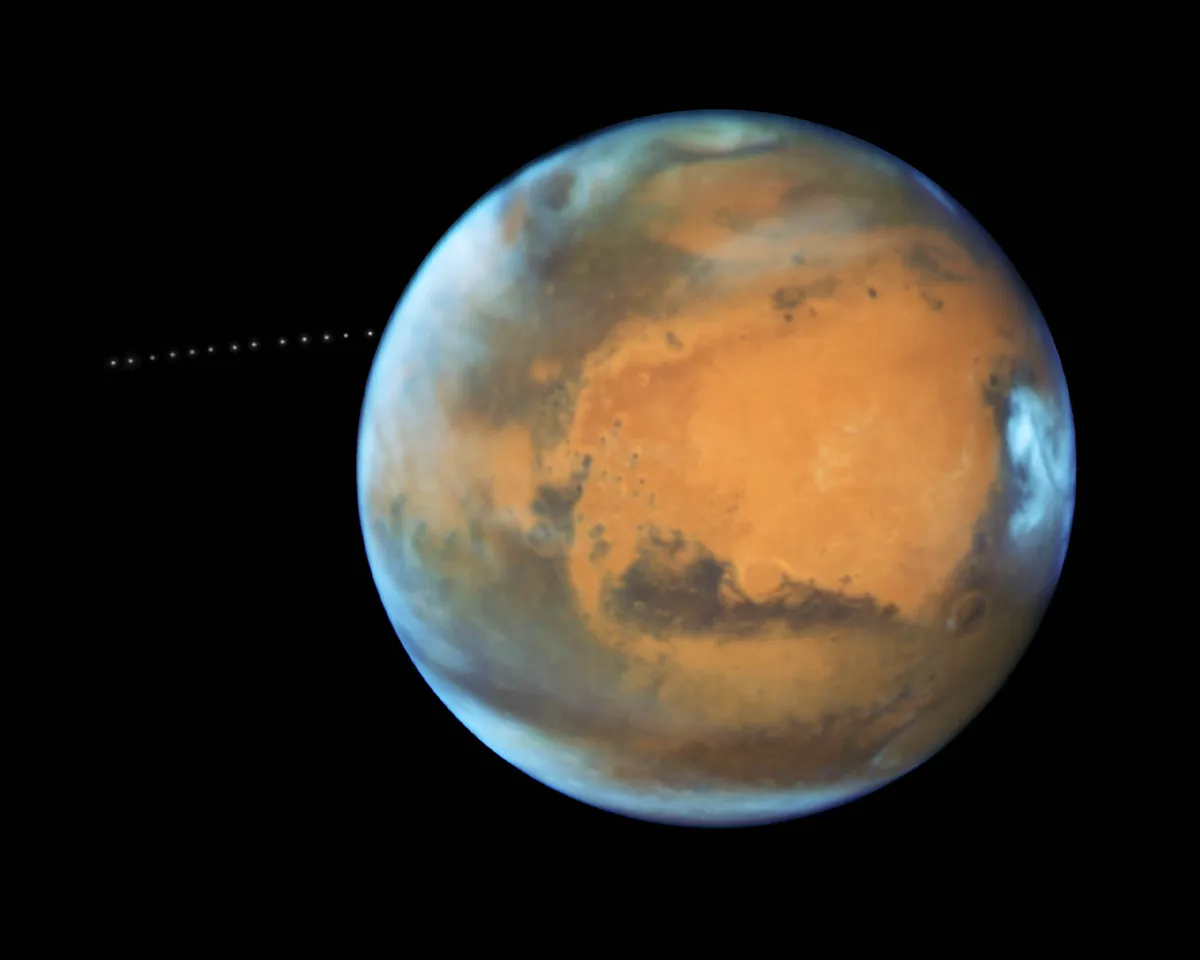
“Hubble was used to help in planning the New Horizons mission which passed by the Pluto system in 2015,” says Wiseman.
“The space telescope’s observations helped inform the planning of that probe’s trajectory and get it safely to Pluto.”
Before New Horizons’ approach, the operations team feared flying into an unseen moon or other obstacle around the dwarf planet, and so used Hubble to search for potential hazards.
It was during this campaign that Hubble revealed the presence of a pair of moons, Nix and Styx, allowing New Horizons to plot a trajectory which avoided them.
Hubble offers another perspective that many of these planetary spacecraft lack – the ability to observe in the infrared and ultraviolet.
For the Juno mission at Jupiter this capability provides extra resolution to its observations of the gas giant’s magnetic field.
Juno’s instrument payload cannot register the high-energy, ultraviolet aurorae these fields create but Hubble can.
By combining the two, astronomers are given a far more complete view of the planet, allowing them to work out even more detail about the magnetic fields of this giant world.
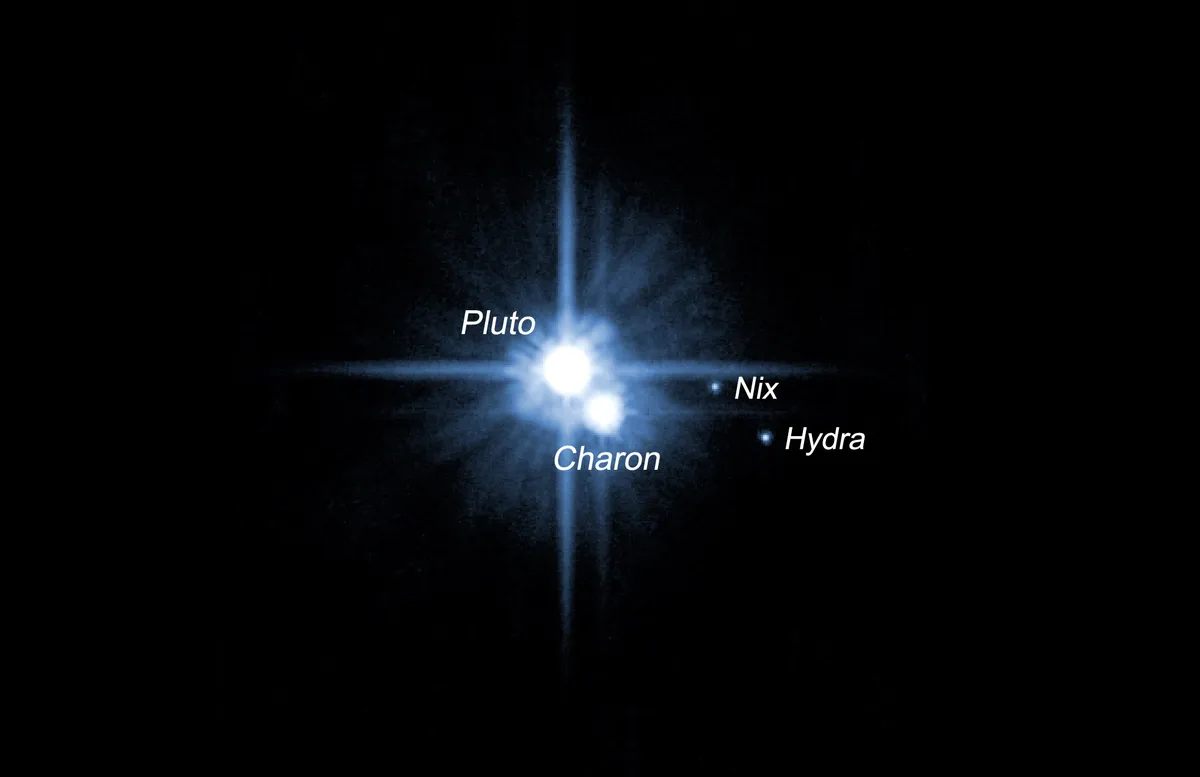
“We’ve also used Hubble to study the nature of some of the moons of these planets, and we’ve revealed some quite unexpected results,” says Wiseman.
“For example, when Hubble observed some of the moons of Jupiter, we found that both Ganymede and Europa showed signs of liquid water oceans under an ice-crusted outer layer.”
In 2016, Hubble helped to confirm the presence of water outside the moons as well, when it confirmed there was a plume of water ice fountaining high over Europa, forced up from an underwater ocean through the cracks in the moon’s crust.
“Those observations are still taking place, still being studied and are still somewhat controversial,” says Wiseman.
“But that’s the exciting thing about being on the cutting-edge of science, doing and redoing these observations, reanalysing them and working out exactly what it is we’re seeing.”
Initiatives like these are laid out long in advance, but not all of Hubble’s work is planned out so far ahead.
Some of its greatest triumphs have come from those times when the Solar System threw out something unexpected – those events which make astronomers drop whatever they’re doing and race to the nearest telescope.
When those events come along, Hubble is always in demand.
“One of Hubble’s most famous detections happened early on in its career, when comet Shoemaker-Levy 9 unexpectedly collided with Jupiter in 1994,” says Wiseman.
As soon as astronomers realised the comet would collide, they called on the Hubble team to make sure the telescope was watching.
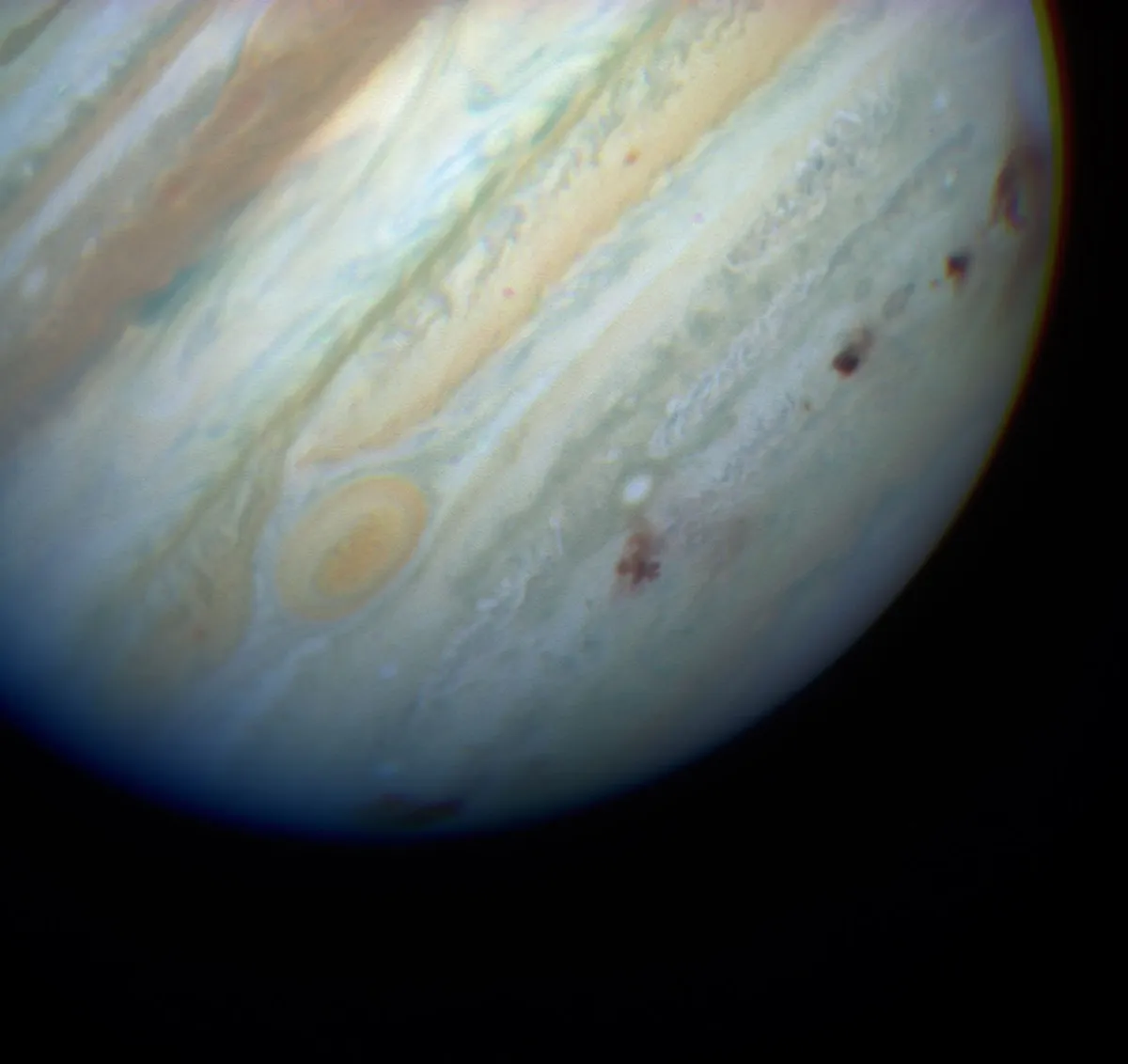
“That incredible set of images completely transformed our understanding of how dynamic the Solar System is,” says Wiseman.
“We realised how vulnerable planets actually are to being impacted by objects and debris whizzing around.”
Hubble has observed many comets and asteroids since then, but in the last few years a new category of transient space rock has been added to the line-up – interstellar visitors.
In 2017, asteroid ‘Oumuamua was seen speeding through our Solar System, having been thrown out of another star system.
Then in late 2019, comet 2I/Borisov followed suit. In both cases, Hubble was on hand to capture the objects on camera as they flew by.
Since Hubble launched in 1990 it has revolutionised our knowledge of the worlds in our back garden.
The telescope has been a key tool in helping to unravel their mysteries, but there are still plenty of secrets hidden in the shadows of these distant worlds.
Top 3 Solar System Moments
Seasons on Uranus
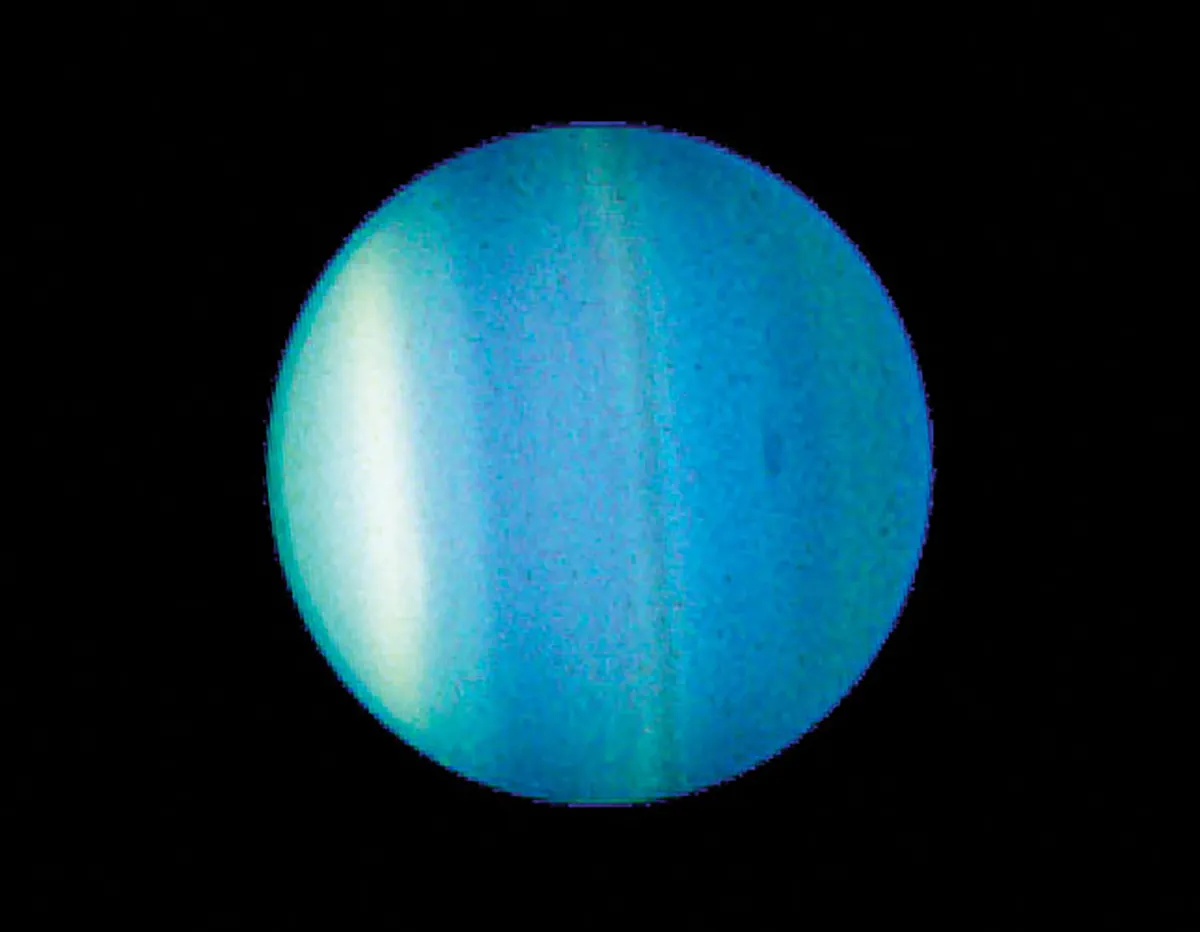
With no long-term orbiter to keep watch over the outermost planets Uranus and Neptune, Hubble has been key in tracking their changing seasons. When Voyager 2 flew past Uranus in 1986, the ice giant appeared to be a placid marble with little weather.
But Hubble has revealed the planet is now in a more active phase, suggesting that seasons have changed, and shown several dark patches believed to be great storms blowing up on the planet.
Demoting Pluto

In 2005, Caltech astronomer Mike Brown uncovered a large body in the outer Kuiper Belt, now known as Eris. After a closer look with Hubble he was able to measure the world’s diameter. It was over 2,300km wide, making it around the same size as Pluto.
The discovery triggered a debate in the astronomical community over what the definition of a planet should be, an argument that ultimately led to Pluto being demoted to dwarf planet.
Jupiter’s aurorae
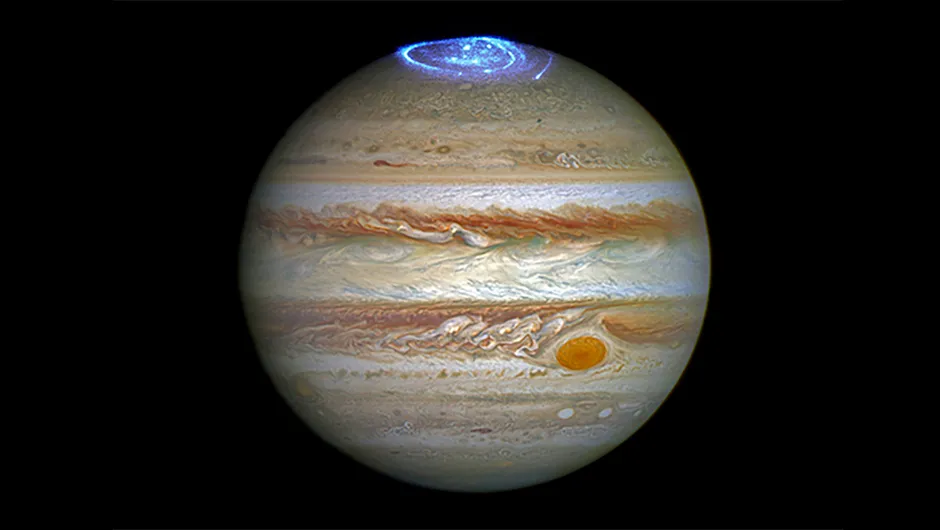
When Hubble first launched, it couldn’t get a good look at Jupiter’s ultraviolet aurorae. Its cameras took so long to take a picture that Jupiter’s rapid spin blurred the image. Then in 1997, Hubble was upgraded with the much more sensitive Space Telescope Imaging Spectrograph.
This could take pictures fast enough to reveal an aurora’s shape and found it formed curtains just like Earth’s, extending several hundred kilometres over the surface.
The Galaxy
The Milky Way is home to some incredible sights. From the dusty beauty of stellar nurseries to the colourful detritus left after a star explodes, Hubble has helped to reveal the beauty of our Galaxy.
Yet these images are not only stunning to look at. To an astronomer’s eye, these photographs have a story to tell – the story of a star’s life.
The tale begins soon after Hubble launched 30 years ago, when it first turned its eye towards some of the clouds of dust dotted throughout our Galaxy.
Astronomers believed that these were stellar nurseries, the places where every star in our night sky began its life.
The most famous image of one of these birthing grounds (and perhaps Hubble’s most famous shot ever) is of the Eagle Nebula, M16.
The picture, taken in 1995, is better known as the Pillars of Creation, due to the dusty columns rising up through the image, inside which new stars are beginning to form.
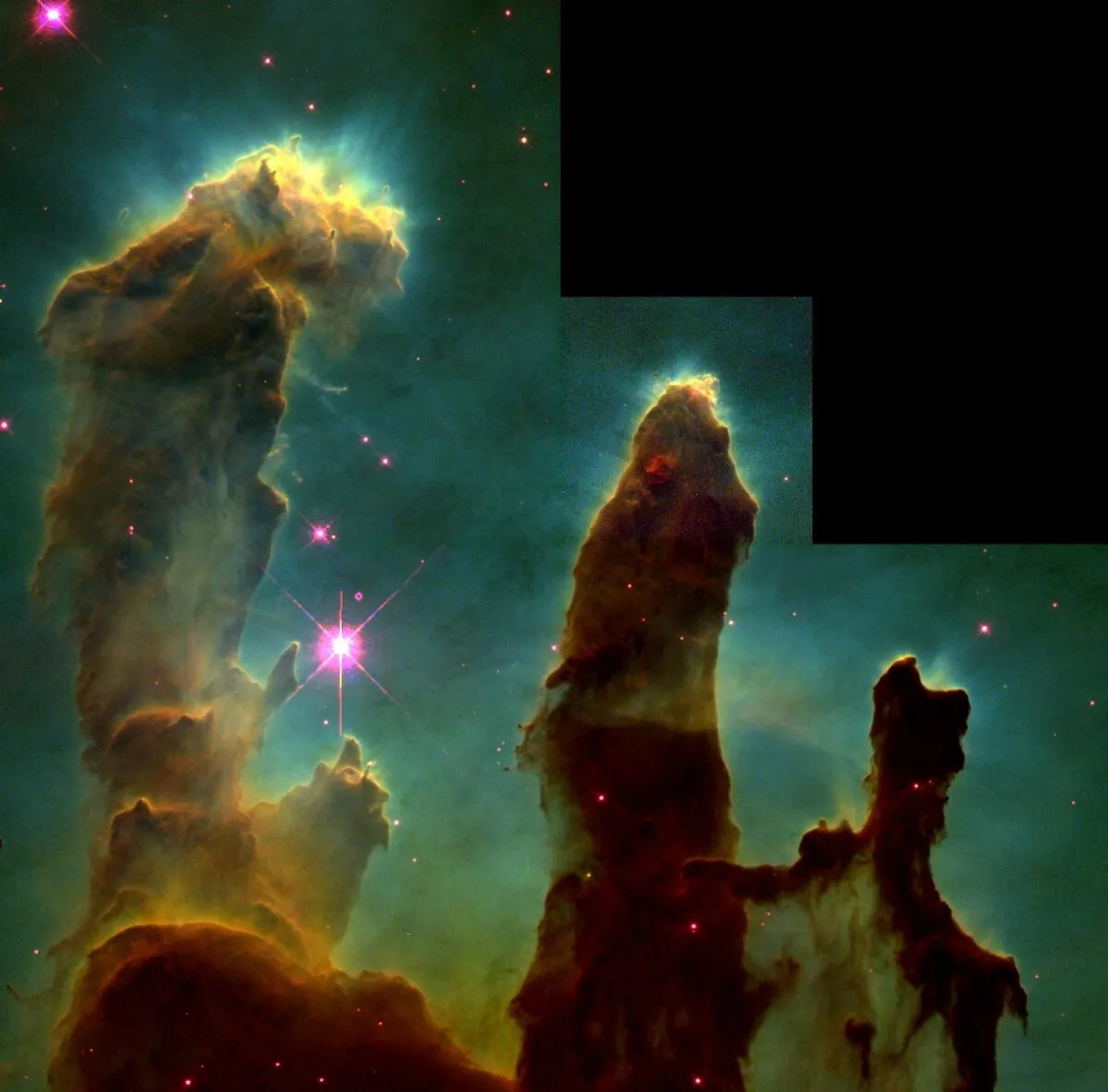
“We see these pillar-like structures in many Hubble observations of these nebulae,” says Jennifer Wiseman.
“The wind from massive newly formed stars carves out these structures around the bigger clumps in the gas that is left behind.”
By studying the shapes of these cloud formations, astronomers were able to unpick these critical early stages in a star’s life.
Partly, they’ve done this by watching how the clouds have changed over the last 20 years.
In 2015, a new version of the same image revealed one of the jets within the cloud had grown by almost 100 billion km, demonstrating just how dynamic these regions truly are.
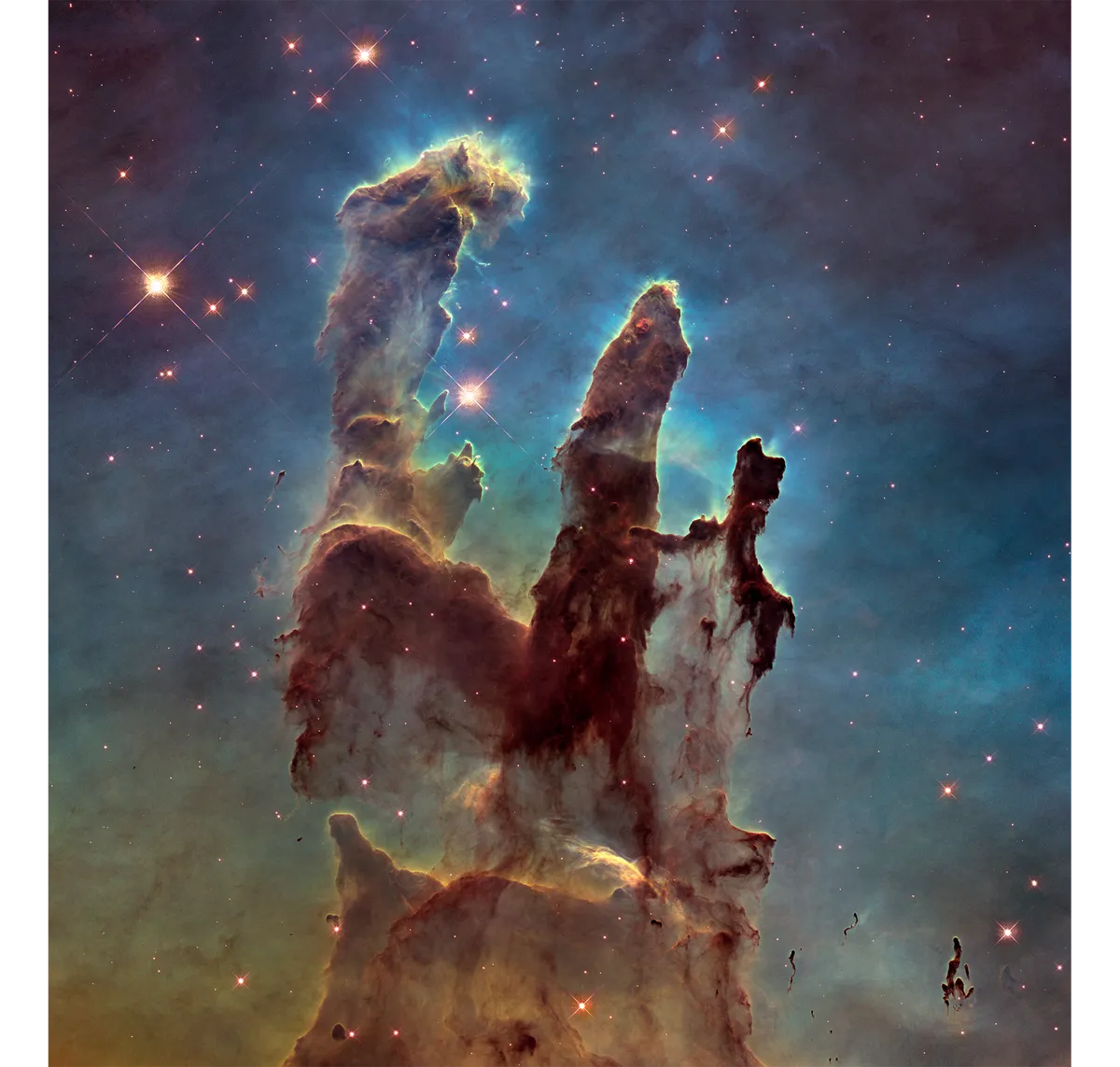
The space telescope has also managed to pin down several protostars themselves. These infant stars on the cusp of forming are normally blocked from view by the very clouds of dust they grow from.
Hubble’s infrared camera was able to peer through this dust, however, and found several hotspots within the stellar nurseries, thought to be protostars.
Even more excitingly, when Hubble took a closer look at some of the Orion Nebula’s infant stars it found several of them had discs of swirling dust – a sign they were entering the next chapter in the story of their lives and forming planets.
As a star grows, it often forms a protoplanetary disc of dust around it. Over time this debris clumps together, gradually growing in size to eventually become a planetary system.
Studying these discs is a vital step in one of the fastest growing study areas of astronomy: exoplanets, the planets around other stars.
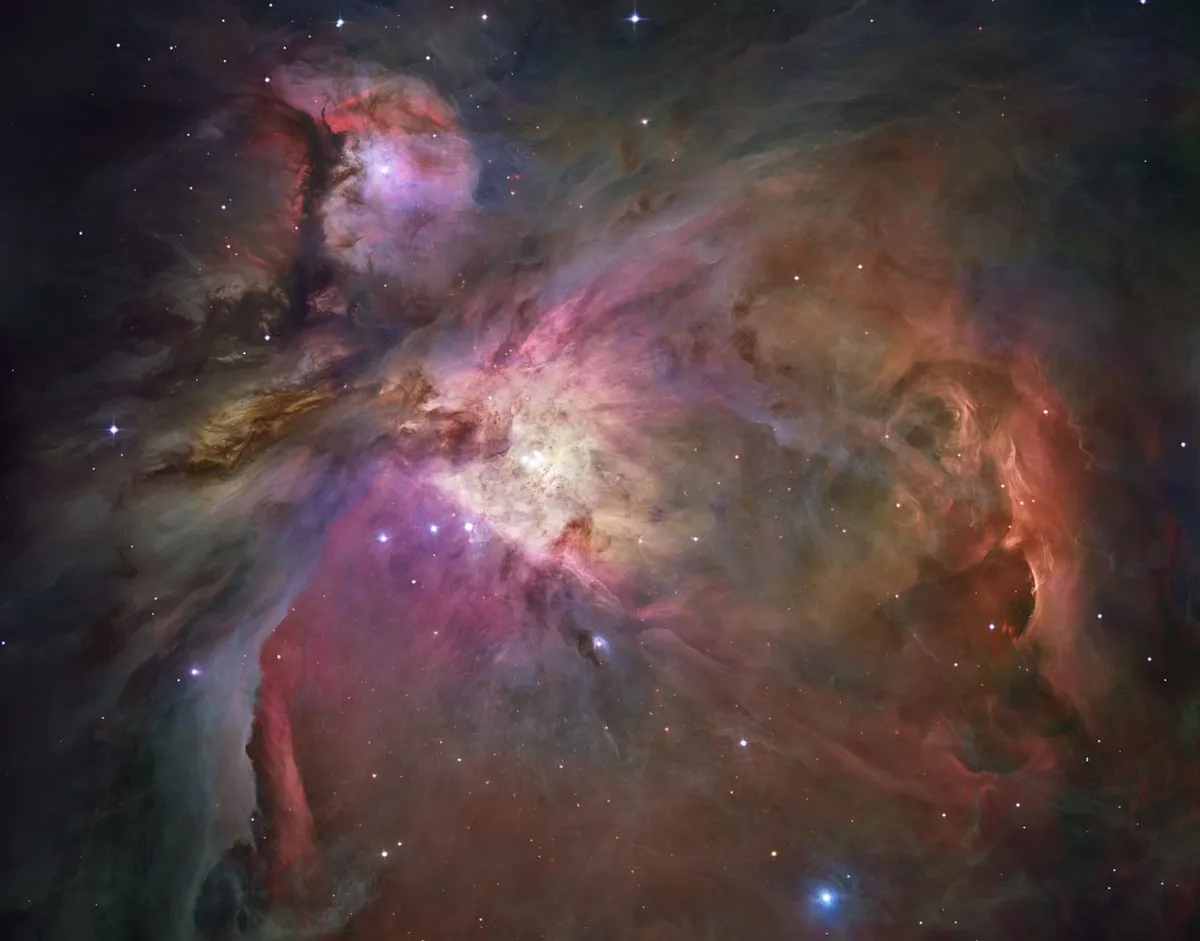
“When Hubble was designed there was no concept that it would be used to study planets outside our Solar System. We didn’t know of exoplanets at that time,” says Wiseman.
Since the first exoplanets were discovered back in the 1990s, over 4,000 worlds have been confirmed; a number which grows every day.
Tracking these planets down requires looking at large areas of sky for a long time.
With its narrow field of view and the high-demand for its time, Hubble is ill equipped for this task. But it can take a deeper look at planets other observatories have already discovered.
“Hubble’s pioneering contribution is in analysing the atmospheric composition of these exoplanets,” says Wiseman.
“It does this by looking at an exoplanet as it passes in front of its parent star. During that transit, light from the star passes through the outer regions of the atmosphere.
"Some of that light is absorbed by the atmosphere of that planet and that signature is still in the light received by Hubble.”
By pulling this signature apart astronomers are able to detect several key elements and molecules within a planet’s atmosphere.
One important molecule that Hubble is especially suited to look for is water. On Earth, wherever you find water you find life.
So astronomers are keen to pin down how many other planets are as wet as ours in the hope of predicting where else in our Galaxy we might find life, ultimately answering that enduring question 'will we ever find life beyond Earth?'

Hubble’s resolution is so great that it can even create a basic outline of the weather patterns on a planet’s surface.
When the telescope looked at tidally locked WASP-43b, where one side of the planet always faces the Sun, it was able to pick out the hot patches on its eternally sunlit side.
Using this, astronomers were able to predict how the winds of the planet blow between the day and night sides.
But just as Hubble reveals the origins of stars and planets, it has also turned to the pages of their final act.
I think Hubble’s most profound contribution has been revealing to us how the Universe has changed over time.
Jennifer Wiseman, Hubble senior project scientist
When a star’s nuclear fuel is expended, they die. If the star is large enough, this death is an explosive affair known as a supernova.
Once again, Hubble’s power lies not in first detecting these cosmic flashes but in taking a look at them afterwards.
Throughout their lifetimes, stars transform the hydrogen created in the Big Bang into helium and other heavier elements.When the star goes supernova, it throws these elements outward.
As the hot cloud of gas crashes into the surrounding medium it creates an advancing shockwave, lit from within by a white dwarf – a small hot star, all that remains of the exploded stellar body.
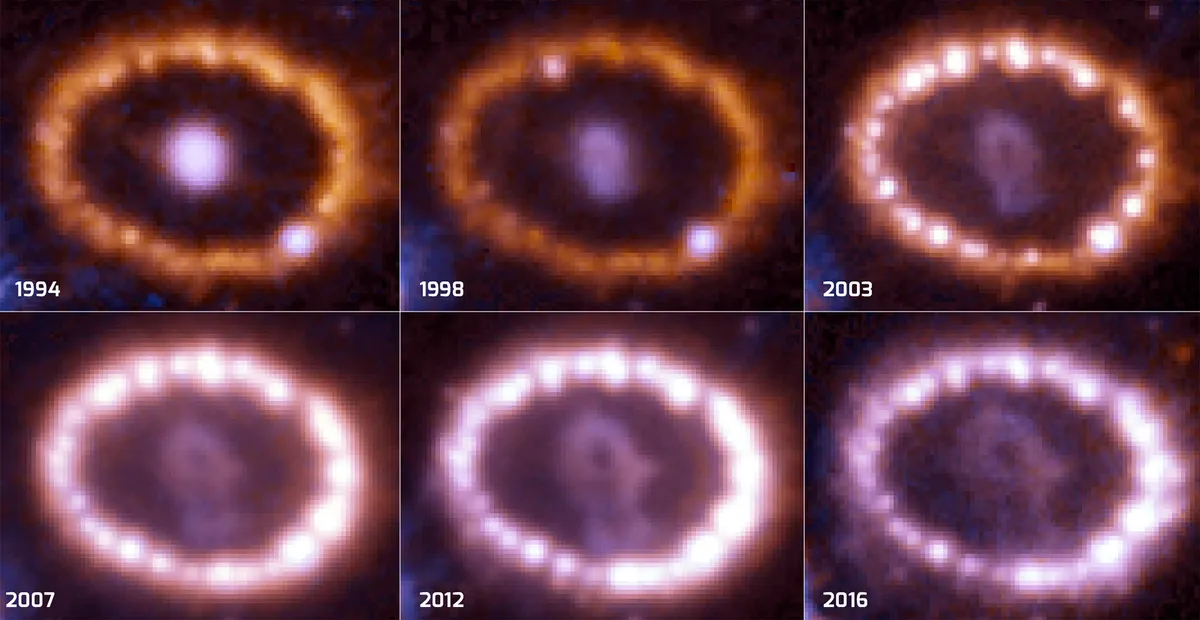
As these gas bubbles look fuzzy and spherical from Earth, they were initially mistaken for planets, leading them to be called ‘planetary nebula’, despite having nothing to do with planets.
In 1987, just before Hubble launched, a supernova detonated in the Milky Way’s companion galaxy, the Large Magellanic Cloud.
Over the years, Hubble has watched as the ring of gas from this explosion has moved out and expanded into the interstellar medium – the gas which fills the space between the stars.
The turbulence caused by these shockwaves can, in time, cause the interstellar medium to gather together.
This new cloud, enriched with all the elements the dying star threw out into the Universe, then goes on to form stellar nurseries, bringing the cosmic tale of stellar life back around to its beginning again.
The Milky Way is a dynamic place, filled with stars being born, forming planets and then dying, only for their remains to provide the fuel to repeat the cycle again.
And Hubble has been critical to observing every step of this incredible process.
Hubble's top 3 discoveries in the Galaxy
V838 Monocerotis

In 2002, the red star V838 Monocerotis flared up, temporarily shining 600,000 times brighter than the Sun. To this day, no one is sure why, but over the last 20 years the light from this flash has advanced outwards, illuminating the surrounding gas.
Hubble has watched this ‘light echo’ expanding outwards, allowing astronomers to map out the gas around the star, hoping to find clues to what caused the outburst.
Water in the habitable zone
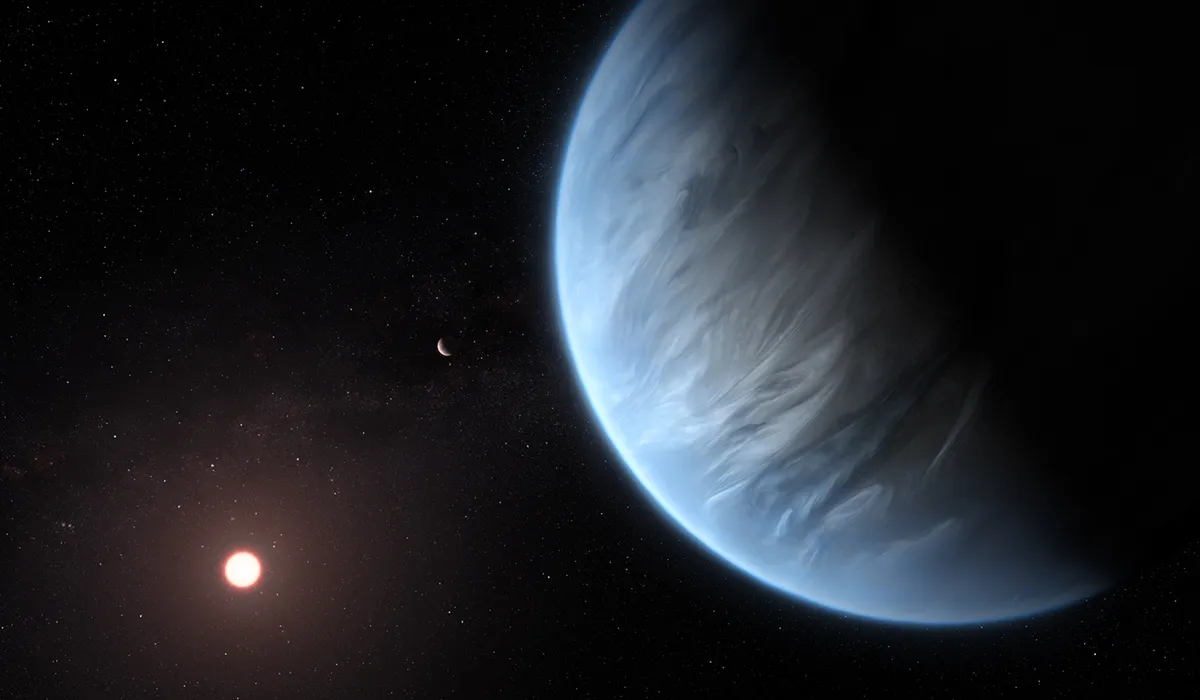
Astronomers have found many exoplanets in the so-called ‘habitable zone’ – the region around a star where temperatures allow liquid water to pool on the surface, potentially allowing life to evolve.
However, there was no evidence that these planets actually contained water until 2019 when Hubble was able to discover water vapour in the atmosphere above exoplanet K2-18b for the first time.
For more on habitability, read our guide What makes a planet habitable?
First direct image of a planet
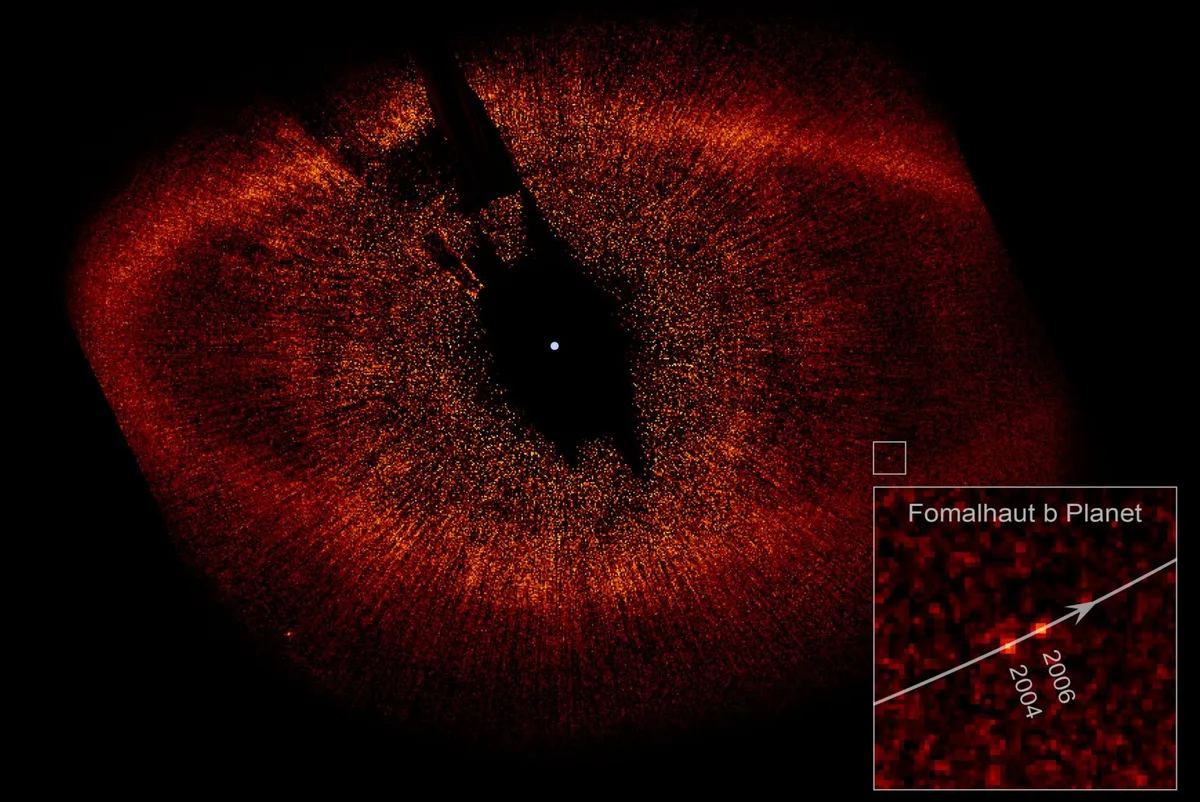
In 2004, Hubble took an image of the 34.5 billion km diameter disc of dust surrounding the star Formalhaut. The inner edge of this disc has a sharp edge, suggesting it is being shepherded by a planet.
Over the years, Hubble kept an eye on the system, watching a bright point of light move around the star. It was an orbiting alien world – the first ever to have been imaged directly.
The Universe
Hubble’s high resolution, large aperture and extreme precision means that it can pull photons out of the darkest reaches of the Universe, looking further back than any visual telescope that came before it.
As the light from these distant galaxies and stars has taken billions of years to cross the void, we see them as they were millennia ago, all the way back to the earliest days of the Universe.
“We can compare the nature of the most distant galaxies to those we see closer to us in space and time, to see if they are different. And, in fact, they are,” says Jennifer Wiseman.
“I think Hubble’s most profound contribution has been revealing to us how the Universe has changed over time.”
Nowhere is this capability better showcased than in the Hubble Deep Field images.
The first of these was taken in 1995, when the telescope took a 100-hour long exposure – many times longer than normal – of an apparently blank stretch of sky.
At the time, some astronomers argued the image was a waste of precious Hubble time, but when the image was put together, they were swiftly proved wrong.
This first image contained almost 3,000 galaxies, some dating back to when the first stars were forming.
These appeared to be smaller and more irregular than those in the present day, demonstrating that galaxies do change over time.
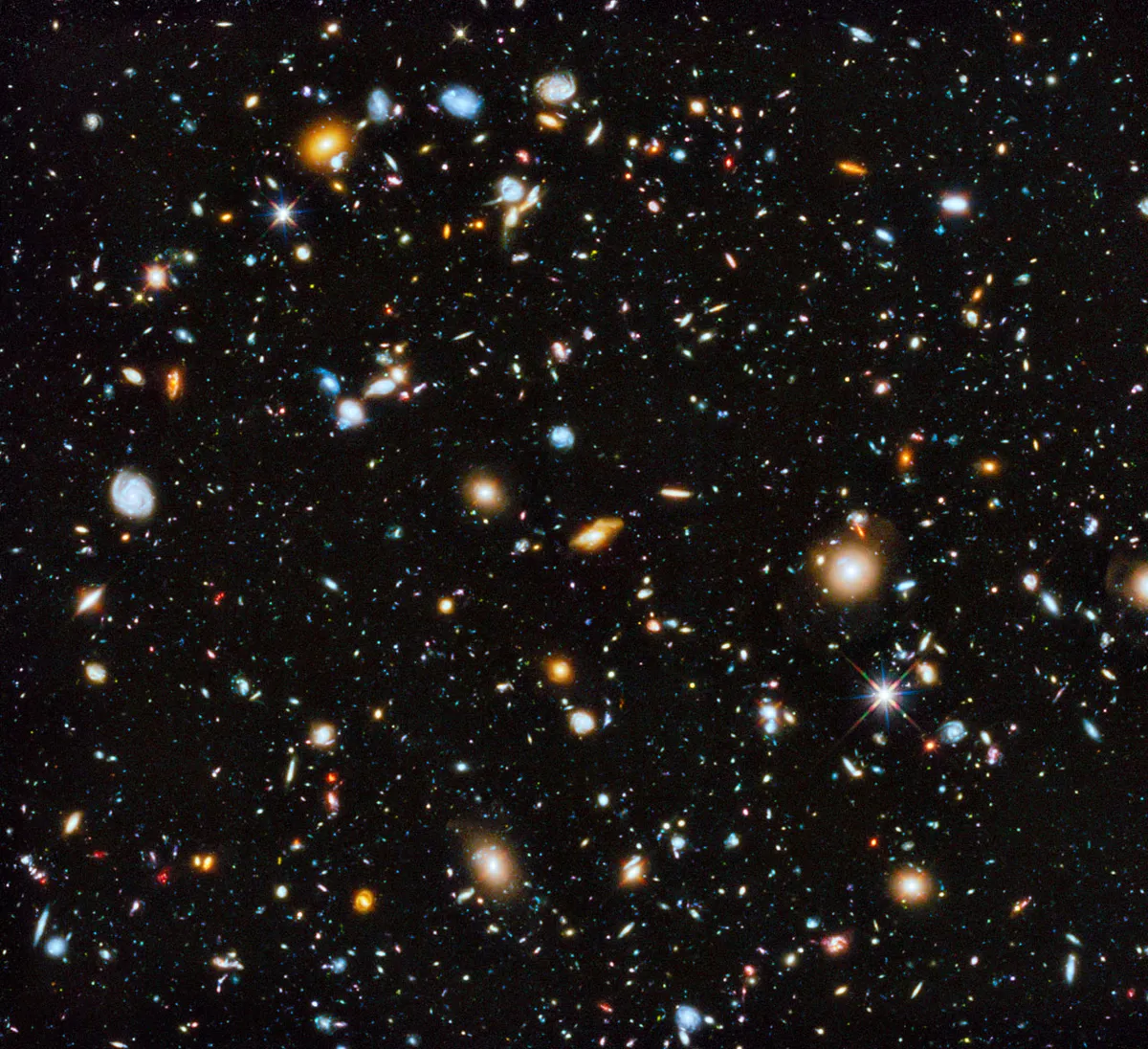
While Hubble’s keen eye has been able to make these out, it has also been key in working out exactly how far away these remote stellar collectives are.
“Hubble observes the Type Ia supernovae that astronomers use to gauge the distance to far away galaxies,” says Wiseman.
These supernovae always explode with the same brightness, so by measuring their apparent brightness from Earth astronomers can work out how far away they – and the galaxy they occurred in – must be.
Calculating these distances is a key part of one of Hubble’s main science goals – measuring the rate at which the Universe is expanding.
“Ever since Edwin Hubble took observations showing galaxies were receding a century ago, we’ve known that the Universe appears to be expanding, and that space seems to be stretching,” says Wiseman.
“But measuring the actual rate of that expansion has been challenging because it requires precise distance measurements.
"Hubble has helped to make these observations with higher and higher precision, leading to one of its most impactful contributions – the realisation that the expansion of the Universe is actually accelerating."
Astronomers were surprised when two independent teams discovered this acceleration in 1998.
We are seeing galaxies more distant and detailed than we would be able to see without nature’s magnifying glass. That’s helping us see the character of galaxies far back in time and look at how star formation is happening within physical regions in the galaxy.
Jennifer Wiseman, Hubble senior project scientist
Everyone had assumed that after the Big Bang the expansion would either slow to a stop or plateau to a steady rate. If the expansion is accelerating, then the question arises: what’s speeding it up?
“We still don’t fully understand,” says Wiseman. “It’s a very hot topic in astrophysics. We call it dark energy and Hubble has really played a key role in its study.”
Today, astronomers believe dark energy makes up around 75% of the Universe. A small portion of the rest is made up of luminous matter, such as the gas and dust that glows in clouds or burns in stars.
The remaining 24% is dark matter, another mysterious substance which threads through our Universe, extending out between galaxies and stars.
This dark matter doesn’t interact with light the way normal matter does, making it completely invisible to normal telescopes.
But it does interact with the visible Universe through gravity, meaning that Hubble is able to bring this ‘unseeable’ substance into the light.
“Any type of mass will distort spacetime,” says Wiseman. “If you have a very large collection of mass, that distortion might actually create a phenomenon significant enough to be observed.”
This effect is known as gravitational lensing, where light from a distant galaxy is bent by the gravity of a huge object, such as a cluster of galaxies.

However, the process isn’t perfect and by the time the light from the distant galaxy reaches Earth it’s usually been badly distorted.
“Hubble is being used to observe clusters of galaxies to detect these arcs of distorted light,” says Wiseman.
“This helps us in two really innovative ways that were never conceived when Hubble was first launched.
"First is that by looking at the gravitational lensing of the galaxy clusters we can tell something about how mass is distributed in these clusters.”
Most of this mass is dark matter. By looking at how much galaxies are distorted, astronomers are able to map out how the mysterious substance is distributed throughout the Universe and through cosmic history.
“Second we can learn more about the background galaxy as it’s being magnified by the lensing effect as well as being distorted,” says Wiseman.
“We are seeing galaxies that are more distant and more detailed than we would be able to see without nature’s magnifying glass.
"That’s helping us see the character of galaxies very far back in time and look at how star formation is happening within physical regions in the galaxy."
Another seemingly invisible object that Hubble has helped illuminate are supermassive black holes.
These dense bodies are several billion times more massive than our Sun and are thought to lie at the heart of most galaxies.
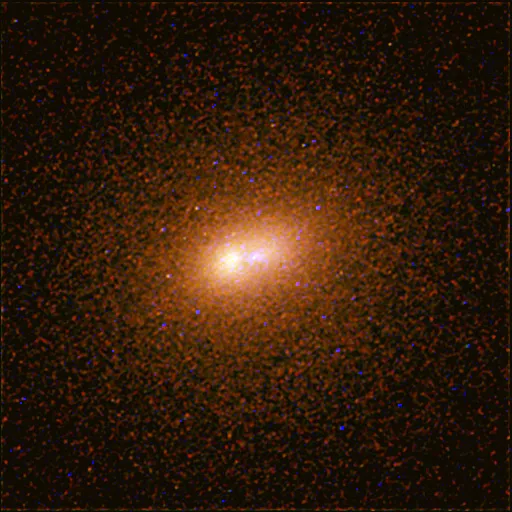
Before Hubble, black holes were entirely theoretical. The only evidence of their existence was radio observations of distant galaxies known as quasars, which contained objects around the size of the Solar System but which shone brighter than any other known thing in the Universe.
Hubble was able to determine that the radio emissions were coming from the centres of the galaxies that held them, most likely from extremely hot gas that was being intensely heated as it swirled around a giant black hole.
In 1997, the Space Telescope Imaging Spectrograph was installed on Hubble. This instrument was much better at looking at the region close to a galaxy’s centre, and it could make out the rapid movement of stars caught in orbit close to a black hole.
The instrument soon found them, definitively proving the existence of supermassive black holes.
For the last 30 years, Hubble has helped astronomers to pull out photons from the deepest depths of space, and even illuminated places in our cosmos where no light shines, helping to reveal the Universe’s darkest secrets.
Top 3 Universe discoveries
eXtreme Deep Field
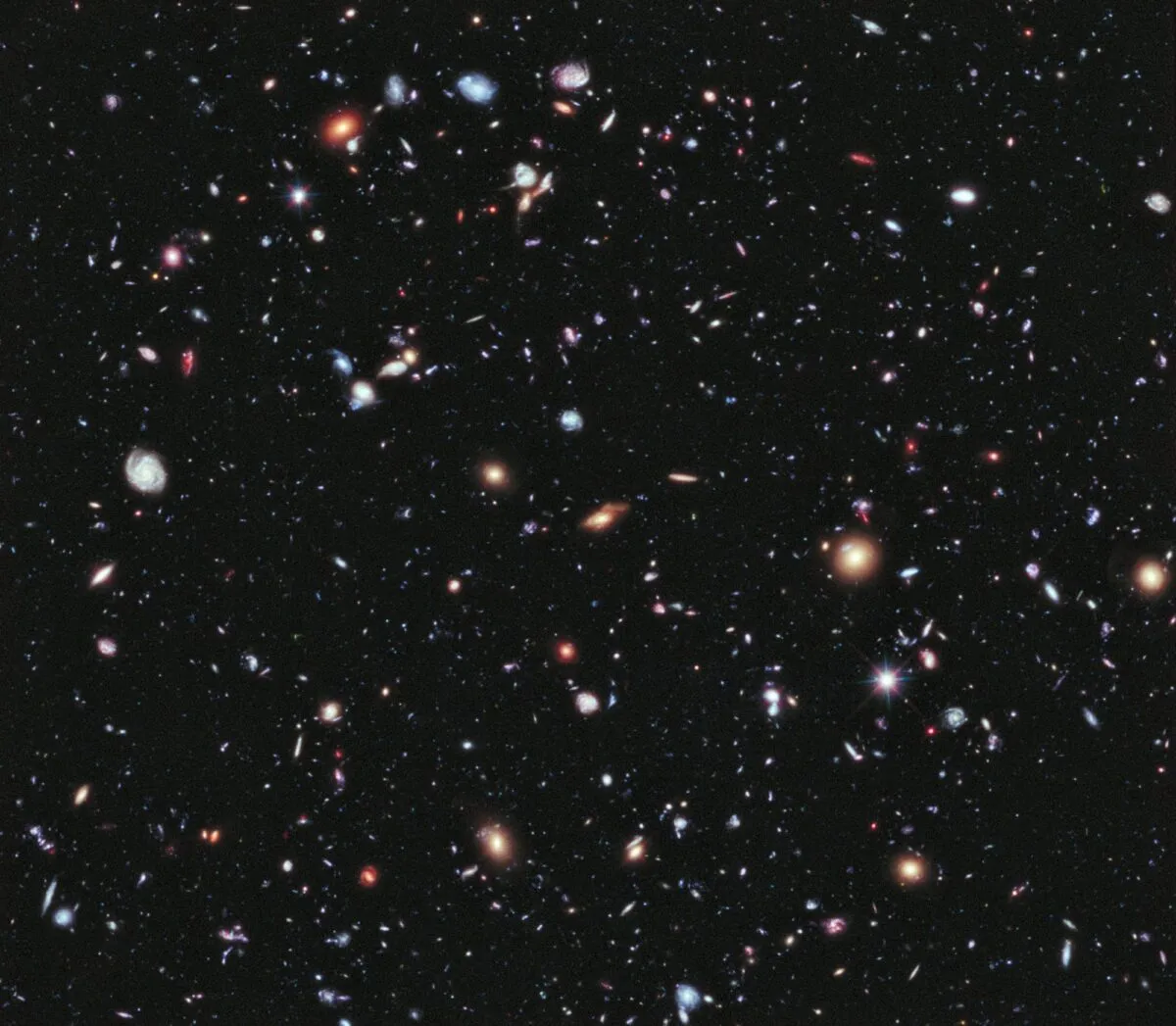
In 2012, the Hubble team released the eXtreme Deep Field. The image covered just 2x2.3 arcminutes, around 1/32,000,000ths of the sky, yet had an exposure time of around 23 days.
It looks back through 13.2 billion years of the Universe’s history, showing one galaxy as it was when it was just 450 million years old.
Confirming primordial helium
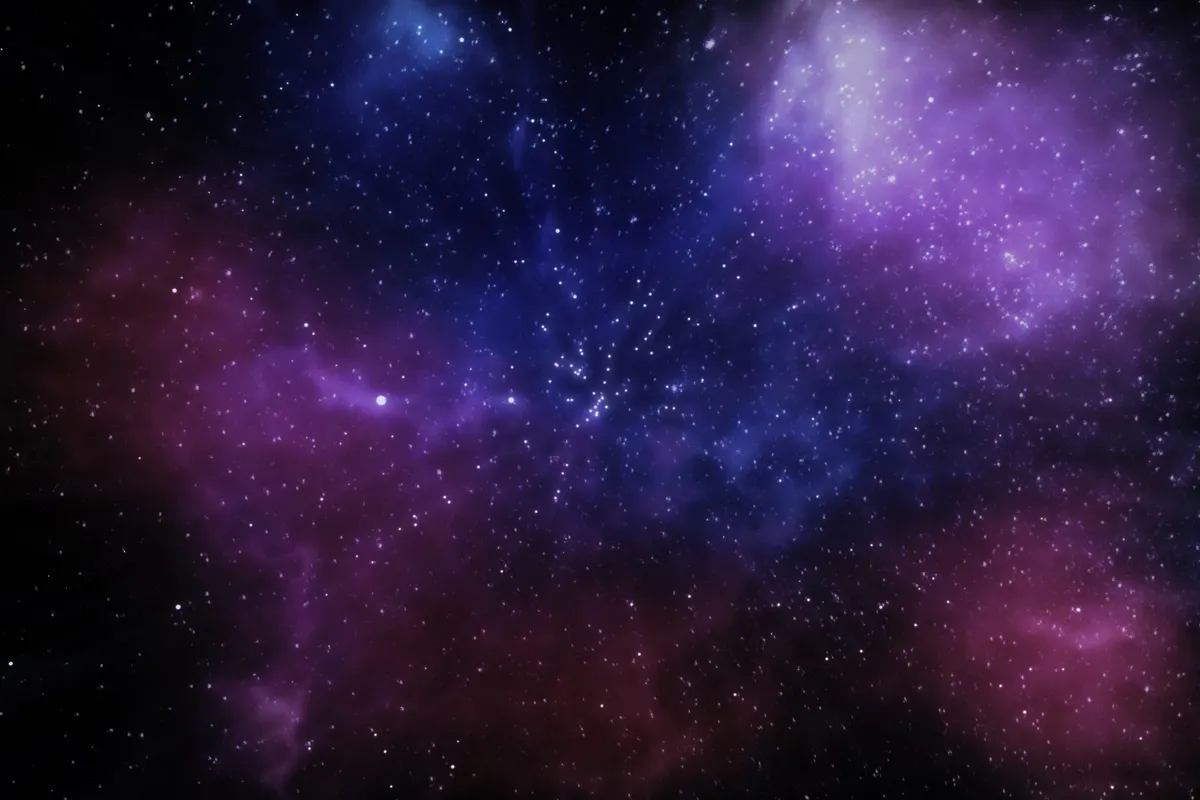
In 1995, Hubble was finally able to confirm the presence of primordial helium. Theory had predicted that after the Big Bang, the cooling Universe formed both helium and hydrogen, but the former had never been seen before.
Gamma ray bursts
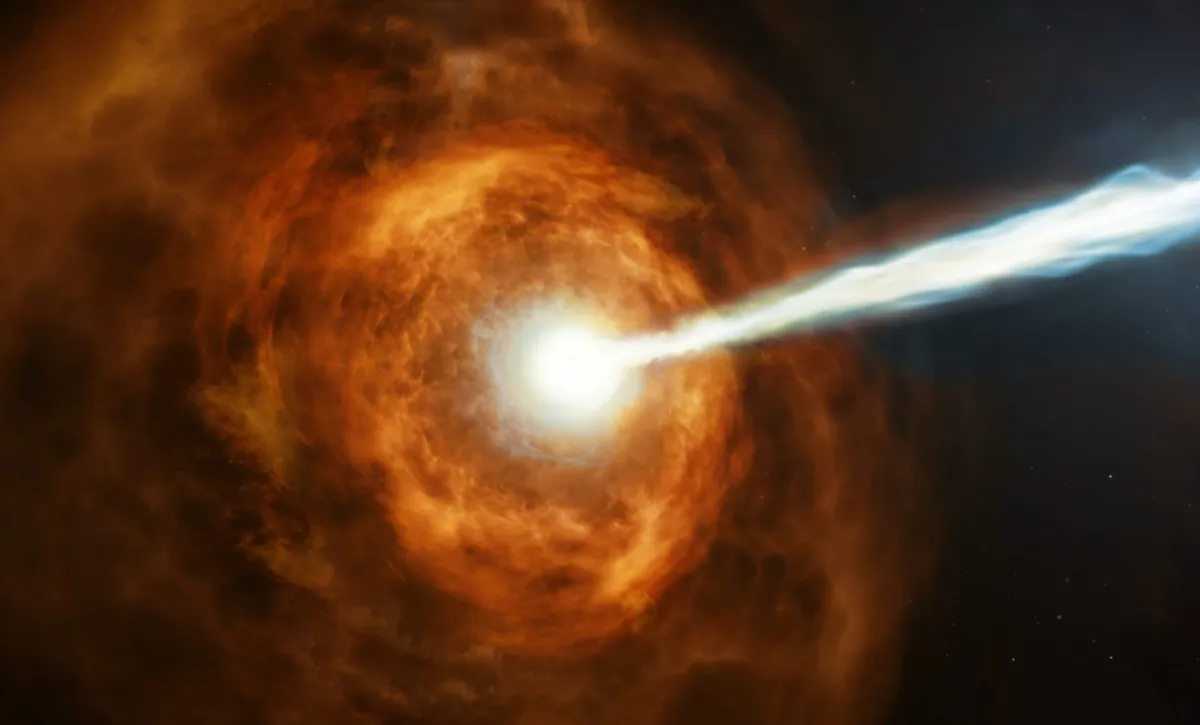
GRBs are the most powerful explosions in the known Universe, but their origins are a mystery.
In 2019, Hubble found a GRB had come from the dense environment of a very bright galaxy around 5 billion lightyears away – a potential clue to the kind of conditions that might cause the bright flash of a GRB.
Ezzy Pearson is BBC Sky at Night Magazine's News Editor. This article originally appeared in Hubble: 30 Years of Discovery, a new special edition magazine available now.
